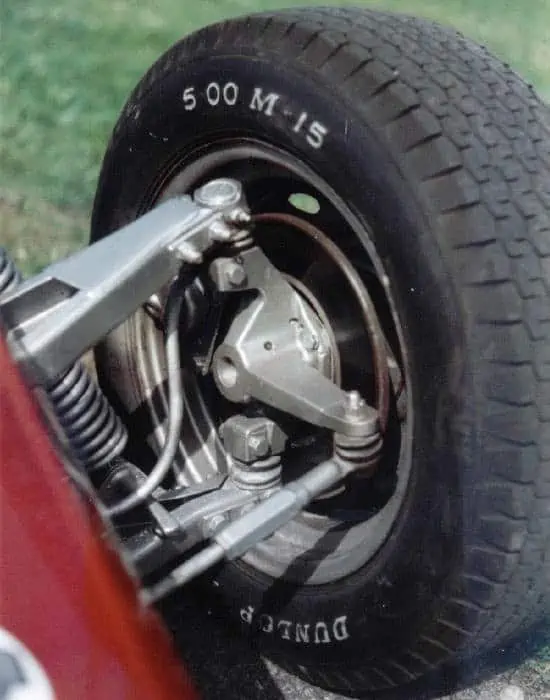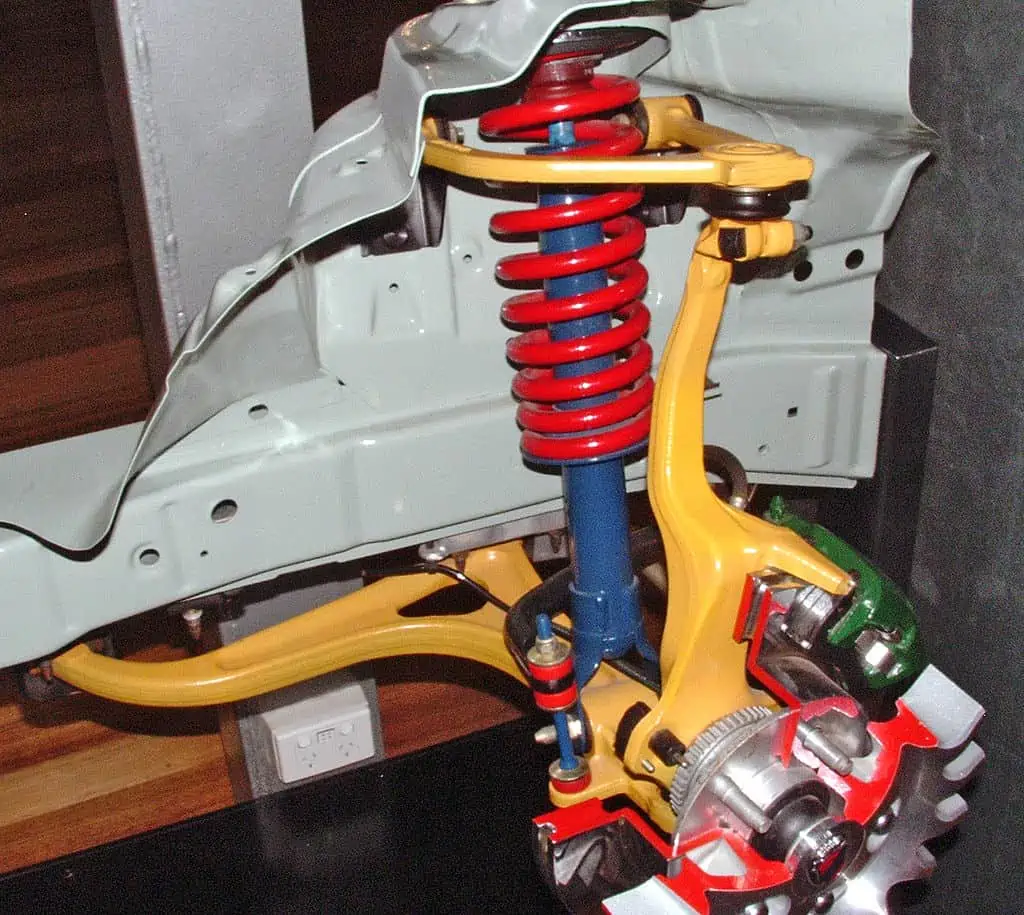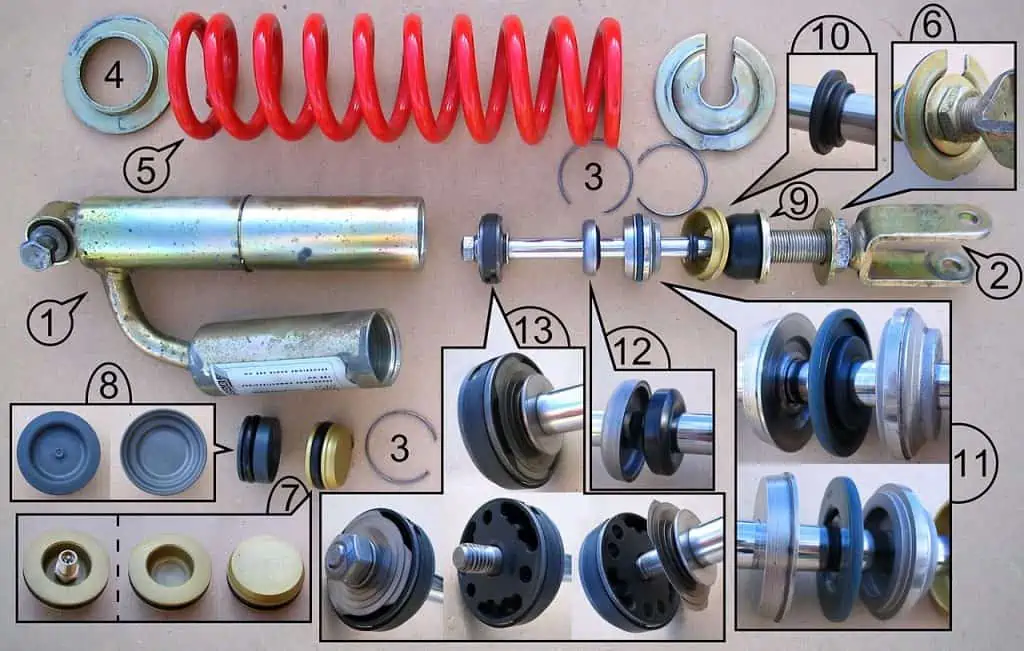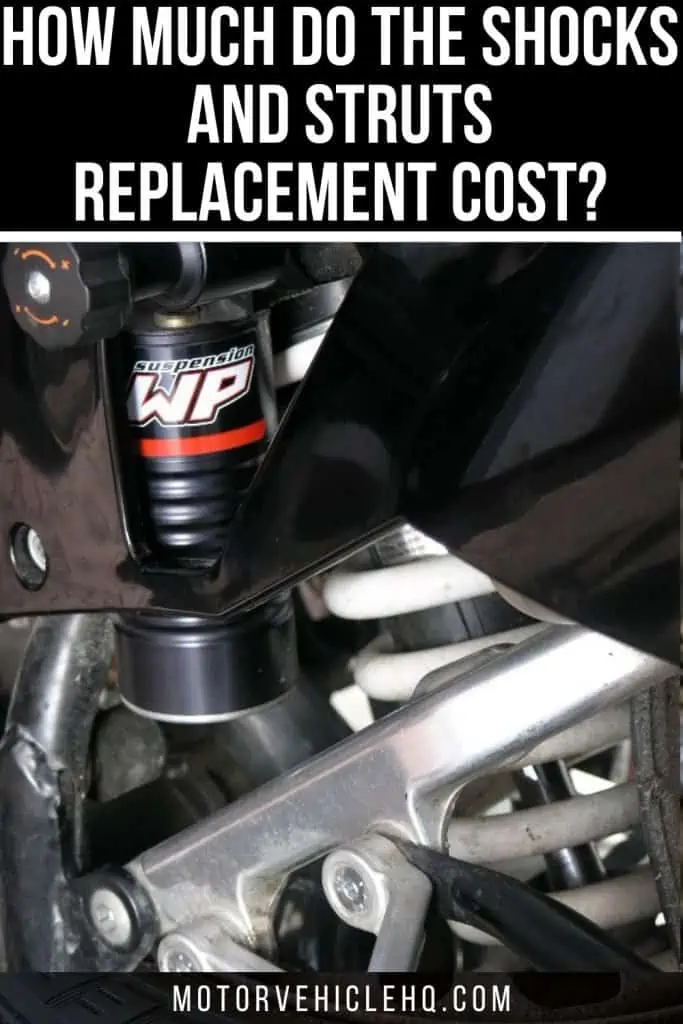Ever questioned why you don’t hit the top of your car every time you go over a speed bump? That’s something your car’s sophisticated suspension may be credited for.
It must ensure that you don’t bounce about too much while simultaneously protecting your body (and the rest of the vehicle) from all that jolting. Therefore, it makes sense that the expense of replacing shocks and struts could not be kind to your pocketbook.
But you must pay, and the issue is more than simply your suffering. A number of the most important parts of your car’s suspension are the shocks and struts. And a vehicle suspension system does have a lot of different components.
You can see how it wouldn’t be a good idea to have your entire vehicle, with its many hundreds or thousands of moving components, all of which need to operate within extremely tight tolerances, bounce around and swing.
But what are shocks and struts exactly, and what are their functions? Shocks and struts are not the same things, right? More importantly, how could they possibly wear out if they are so crucial to the health of your car?
How can I know if I need to repair my shocks or struts? Furthermore, how much will I be required to pay for all of this? All of these are extremely important issues, and we hope to provide answers in our shocks and struts replacement cost guide.
Shocks: What are They In a Car?
Knowing each part’s purpose is important when estimating the typical cost to replace shocks and struts. When you’re traveling on rugged terrain or uneven roads, the shock absorber in your car maintains the tires on the ground, making the ride comfortable and smooth.
In difficult driving circumstances, this system enables you to retain good vehicle control and prevent it from drifting off the road. Despite having identical designs, shocks and struts have somewhat different internal mechanisms and typical replacement costs.
WP rear shock unit by Motophil / CC BY-SA 2.5. Unlike struts, which only have one suspension component, the shock includes two to connect the internal steering system. The joint that joins the two suspension portions is made out of a cylinder.
The link connecting two suspension components bears the majority of the vehicle’s weight for the shock. The shock has two suspension components to link the internal steering system, unlike struts, which only have one. A cylinder is part of the connection between the two suspension sections.
The hydraulic fluid is kept in this cylinder, which is also known as the reserve tube. As we all know, hydraulic fluid is essential for lubricating the transmission and internal engine system to avoid overheating and excessive friction.
The overall average cost to repair shocks and struts may increase if this cylinder sustains damage or degrades over time.
The shocks are created when one cylinder houses another, known as the pressure cylinder when examining the average cost to replace shocks and struts.
This pressure cylinder, which consists of a piston that moves and analyzes the movement of fluid between pistons, makes sure that the engine’s fluid level is appropriate for it to operate at the level of performance required to propel the vehicle.
Although this technique may seem straightforward to some, a shock absorber might experience many problems. There are various signs of failing struts and failing shocks, therefore we need to consider both when comparing the typical cost to replace them.
Struts: What are They In a Car?
If you compare the typical cost to replace shocks and struts, you’ll notice that the design, construction, and general mechanism of the two components are very similar. To understand how to maintain your car running at a high level and to minimize replacement expenses, you must grasp key distinctions.
The struts of a vehicle with strut suspension serve as the vehicle’s shock absorbers. Shocks are used in vehicles with shock suspension to reduce vibration and provide a smooth ride.
Struts are used in place of shock absorbers in this form of suspension to limit how much your vehicle bounces and prevent it from jerking when you stop suddenly.
Although shocks are common, you may discover that more car owners choose struts since they are less expensive to install to your vehicle when comparing the typical cost to repair shocks and struts.
Why Do Your Shocks and Struts Need a Replacement?
So far, it has become clear that the shocks and struts in your vehicle serve a variety of important functions. They shouldn’t be able to wear out, though, should they be this crucial, right? It’s not quite that easy, though. Keep in mind that the undercarriage houses the whole suspension system of your vehicle.
In other words, it is left outside (and at the bottom) of your vehicle while you are traveling, where it is exposed to the weather. This makes it susceptible to being struck by many sorts of debris.
Additionally, the shocks and struts in your vehicle must absorb any minor road imperfections. Speed bumps, potholes, lane signs, cobblestone roads, gravel, stones, and a ton more are included in this. The most frequent problem with shocks or struts is leakage, whether it is of pressurized gas or hydraulic fluids.
This will start to show up as soon as cracks begin to form or the seals start to deteriorate. Your shocks or struts will stop cushioning your vehicle as effectively once they begin to leak.

This will eventually result in the premature wear out of other stressed suspension components in your vehicle. The good news is that shocks and struts shouldn’t need to be replaced all that frequently because that is how they were intended to work.
Every 40,000 to 60,000 miles, most manufacturers advise owners to have their shocks and struts inspected. However, if you take proper care of them, some can endure 75,000, 90,000, or even 100,000 miles.
Which Ones are the Common Bad Shocks and Struts Symptoms?
In this regard, one of the most often asked concerns is “Can I keep driving with worn-out shocks or struts?” In a nutshell, we do not advise it. At the absolute least, only across extremely short distances and in emergencies.
Driving a car with old shocks or struts is difficult, to begin with since you will have experienced a lot of bumping. Leaving this unfixed might potentially cause the remainder of your vehicle to deteriorate over time. It’s reasonable to assume that all that bouncing won’t make the rest of your car’s suspension very pleased.
Furthermore, you can probably assume that all those abrupt shocks and powerful hits resonating throughout your vehicle might cause some parts to wear out more quickly. A full component, such as cables or hoses, may be shaken away, or mounts or bearings may become too strained.
Therefore, taking precautions while maintaining and repairing the shock and struts in your vehicle will undoubtedly assist to avoid future repair expenses that are much greater, more involved, and more expensive.
Fortunately, you won’t be forced to get them changed right away. With worn-out shocks or struts, some mechanics claim that you may still drive for no more than a week or two.
Keep in mind that this is only a rough estimate and ignores the specific condition of your vehicle. If you experience even one of these symptoms, we still strongly advise that you merely pay the necessary shocks and struts repair costs.
1. A Higher Rate of Car Bouncing
Your vehicle should always remain steady with a good shock and strut. You shouldn’t feel as though you are seated in a bounce house.
As a result, when your vehicle starts to bounce around excessively every time you drive over a very tiny barrier, something is wrong with the suspension. Most frequently, we can direct this issue more directly to the shocks or struts.
By stooping down and inspecting your vehicle’s shocks and struts, you can try to identify the issue. You’ll quickly need a replacement if you notice that your shocks and struts appear a little greasy or oily.
Alternately, check to see whether there is a pool of greasy substances next to where the tires are seated.
They can eventually wear down and begin to leak, as we previously discussed in our guide on the shocks and struts replacement cost.
2. When Making Turns the Car Rolls
The term “body roll” simply refers to how much your vehicle leans when turning. It may seem as if your vehicle is ready to topple over and collapse on its side when there is too much body roll.
The shocks and struts in your vehicle should function to reduce excessive body roll if they are in excellent condition. Even if it’s a higher and heavier vehicle like an SUV or truck, it should keep your car and its four wheels securely grounded.
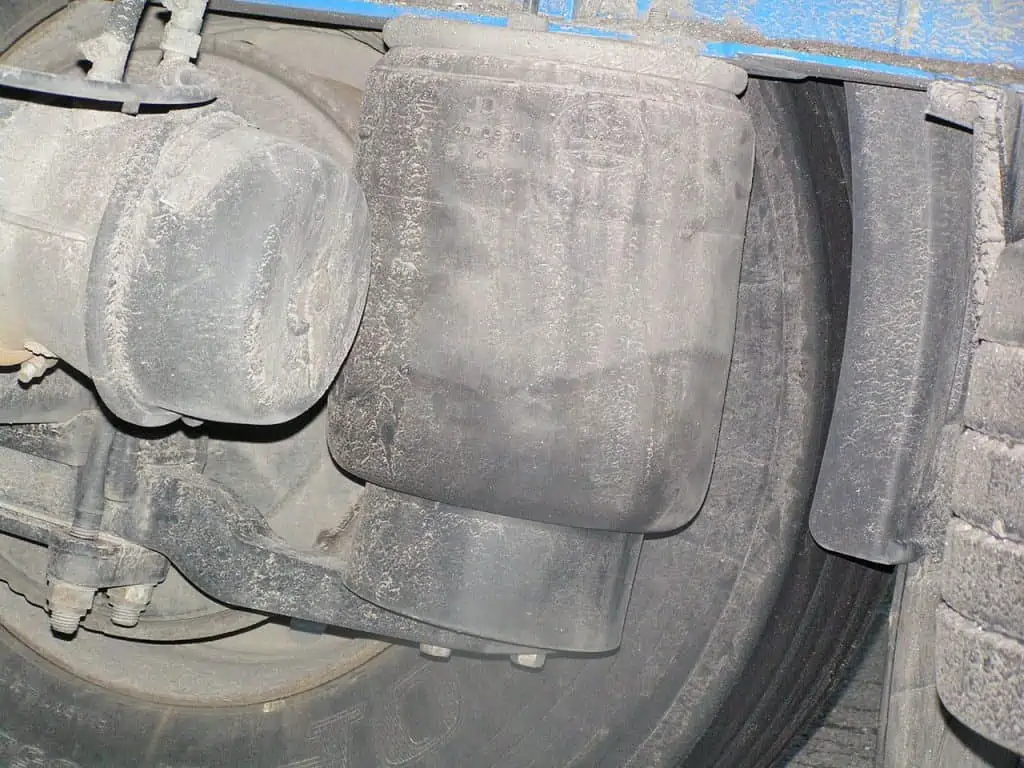
Another blatant indication that your suspension isn’t working properly is when you experience this dreadful tilting too far right or left. Your vehicle might potentially roll over if you turn around at higher grades or too rapidly!
Once more, we may attribute the problem to deteriorated shocks or struts. Even if you aren’t moving, you may at least still be aware of this. When your vehicle is parked on a level surface, check to see whether it leans more to one side.
3. Vehicle Squatting When Braked or Accelerated
You can experience your vehicle bouncing front to back in addition to up and down. When you step on the brakes, it seems as though your car is sinking in or slamming forward nose-first into the earth. Or, when accelerating, you might feel your vehicle stooping forcefully backward.
Even with decent suspension, this can happen, but it shouldn’t feel as though the front or back ends are touching the ground. You might perform a “bounce test” to confirm this for yourself.
Go to the front of your car and press down with your full body weight on the hood while it is securely in “park.” When you let go, tally how many times the vehicle jounces.
By applying pressure on the trunk lid, you may then repeat similar actions on the back of your vehicle. In either case, worn-out shocks and struts are present if your vehicle bounces more than two or three times.
You can more clearly determine which side of the vehicle is more worn out by doing this both in the front and back of the vehicle.
4. Unusual Clunking Noise
The suspension on your vehicle shouldn’t be generating any noises at all. When you drive over a bump or hole, your suspension may be worn if you hear “clunking” sounds or any other kind of noise.
When the tires continue to bounce around while using shocks and struts, it makes that clunking sound. The shocks and struts in your vehicle are what keep the body and wheels from bouncing around excessively, as we’ve discovered so far in our shocks and struts replacement cost guide.
5. Auto Tires with Uneven Tread Wear
Extending from the last point, the condition of your tires may tell you a lot about the health of your shocks and struts. Vibrations via the steering wheel can let you know if your tires are moving around a lot. However, you might check your tires to be sure if you can’t feel this symptom through the steering.
Your vehicle won’t be able to retain its stability as stably as it once did if its shocks or struts are worn out. This implies that one side or set of tires will be subjected to more pressure and strain than the others. Look for any uneven tread wear on your tires. It could be visible along the tire’s inner or outer walls.
Additionally, keep an eye out for the pattern of the clothing itself. The tires of a vehicle should typically degrade uniformly over their width. However, with a suspension that may be broken, the uneven wear might show up as a wave-like pattern.
6. Abnormal Vibrations
It could not be in the proper position if the piston seal within the shocks has suffered damage from repeated usage. The shock may enable fluid to pass the valve if it is not positioned properly.
Uneven terrain will result in increased vibration that you might feel in the steering wheel due to leaks and inappropriate fluid levels caused by fluid flow. The typical price to replace shocks and struts will increase as soon as you notice wheel vibrations.
Instead of replacing both shock absorbers and struts on the front axle, you may just do it on one side. Although it can be tempting, we don’t advise saving any of your hard earned money when it comes to this.
7. Poor Braking Efficiency
When you use the brakes, you may notice that it takes a while for the car to come to a complete stop. This indicates that the shocks are worn out and broken.
Due to the additional time required for the vehicle to absorb all of the piston rod lengths, both types of broken shocks or struts might increase by stopping distance.
The typical cost to repair shocks and struts may increase since the interior components may eventually break down due to excessive friction and wear.
8. Leakage of Fluids
You could see that your shocks’ seals around the shaft do not appear to be quite correct when you visually check them. If this happens, fluid will start to seep from the shock and down the side of the mechanism. The ability of the shock may be diminished by this fluid loss, increasing the average cost of replacing shocks and struts.
9. Ruptured Bushing
Some points at either end of the shock enable a stable connection to the vehicle. Rubber bushings are used in these attachments to make the connection secure and properly sealed. As your car travels over speed bumps and uneven terrain, one of these bushings might shatter, causing a loud noise.
Before the situation worsens, you must determine the underlying source of the problem and learn how to diagnose and fix the broken bushing. Shocks and struts might cost more on average to replace if a bushing is damaged.
How Much Do the Shocks and Struts Replacement Cost?
We can talk about finances more now that you’ve patiently waited long enough. Keep in mind that the suspension of your vehicle is made up of several parts that interact with one another.
Several components need maintenance, including the coil spring itself, control arms, ball joints, sway bars, bushings, and a lot more. A whole suspension system replacement or repair typically costs between $1,000 and $5,000.
If we focus on only shocks and struts, we can see that the typical replacement cost falls between $200 and $1,500. Four shocks and four struts are included in this pricing, which applies to the full set for your vehicle.
However, be aware that struts cost more; you should budget at least four figures for a single pair. If you own a high-performance or heavy-duty car, this price may also increase.
Sports cars, pickup trucks, or specialist 44 off-road vehicles are a few examples. In this situation, the cost to replace all of the shocks and struts might range from $2,000 to as much as $5,000.
Finding a precise price for your car is difficult. There are simple methods to accomplish this, though. Call your neighborhood dealer or technician for a price estimate. Alternative sources include websites like RepairPal, RepairSmith, YourMechanic, AutoGuru, Fixter, and others.
Can You Replace Just a Single Shock and Strut?
Sometimes we try to save money by merely repairing one shock or strut instead of paying for the entire set to be replaced.
For instance, you might only replace the shocks and struts on one side of the front axle rather than both. While it may be tempting to save some of your hard-earned cash, we don’t suggest it.
Car shocks by RB30DE / CC BY-SA 3.0. Since the inner parts may ultimately degrade as a result of excessive friction and wear, the normal cost to repair shocks and struts may rise.
First off, since one shock or strut performs better than the other, changing them exclusively on one side would result in uneven wear.
Your tires will ultimately wear out more quickly as a result of this, as we previously taught, and you will need to replace them. You will now need to be concerned about tire balance and additional labor expenditures.
In addition, it will prematurely wear down the remainder of your car’s suspension, which will cost you much more in repairs. We advise replacing whole pairs, such as both the front and rear shocks and struts, depending on your mechanic’s diagnosis.
What Factors Influence the Shocks and Struts Replacement Cost?
When estimating how much it will cost to replace your shocks and struts, several different variables come into play. Your car’s brand and model are one way.
You will undoubtedly pay more for luxury vehicles because a Mercedes’ shocks and struts are undoubtedly different than a Honda’s. The next step is to decide where you will drop off your vehicle. Price-wise, official dealers have always been more expensive than independent retailers.
The extent of the rust on your vehicle will be the next thing we need to know. The more rust there is around the suspension—which is typical in older cars—the longer and more laborious the repair will be.
As a result, the remedy will take longer to complete, which will increase the labor cost. Generally speaking, it takes 2 to 4 hours to replace a full set of shocks and struts.
If you want to delve a little more into the entire suspension, realize that current vehicles have more sophisticated and sophisticated settings. Innovative technologies like active damping or air suspension may be a part of this.
Although these modern suspension systems are undoubtedly more comfortable, when they malfunction, they may be exceedingly dangerous and expensive to repair.
You may also look at your car’s warranty or insurance to add to that. In some situations, they could be covered for the cost of replacing the shocks and struts.
Which Is the Cheapest Place to Carry Out Your Shocks and Struts Replacement?
Asking about getting the most affordable installer of new shocks is undoubtedly an excellent idea. A whole set of four shock absorbers costs, on average, between $300 and $600.
Having said that, shocks are one area of car maintenance where spending extra can be justified. Selecting name-brand shocks, which are more expensive and of greater quality, and having them fitted properly may end up saving you money.
You see, subpar or inexpensive shock absorbers won’t last nearly as long as the best ones available.
Therefore, compared to more expensive, but better made and higher quality shocks, you’ll probably have to spend more for around a decade to replace these inexpensive shocks. The same reasoning holds for careful installation work.
How Can You Avoid Premature Shocks and Struts Replacement?
Now that we are aware of how expensive shocks and struts repair may be, it would be beneficial to understand more about how we can save them from wearing out earlier than necessary.

There have been owners who haven’t had to repair the shocks or struts in their vehicles after 100,000 miles. Being attentive when driving is the simplest approach to increasing the lifespan of your crappy old suspension.
To avoid hitting any speedbumps, potholes, or possible debris, drive slowly and moderately. Take them gently, and make an effort to prevent any abrupt or jarring jolts.
But pay attention to how you’re treating your vehicle as well, not simply how you drive. The health of your car’s shocks and struts will be impacted by the amount of load, or mass, that you are applying to it. Therefore, pause before using your vehicle to move the furniture.
Then, when you’re driving your vehicle, you should pay attention to your surroundings. Avoid driving in bumpy conditions that could put a lot of stress on your shocks and struts.
In other words, drive as little as possible on gravel or unpaved roads, and proceed with caution on poorly surfaced highways. Some pastimes may also cause your suspension to degrade far more quickly.
Off-roading and driving to a racetrack are examples of this. Although enjoyable, it can eventually set you back a lot of money.
What Is the Lifespan of Car Struts?
Struts are naturally built to survive a long period since they are structural. Additionally, be able to withstand battering throughout daily commutes. It must take a lot of knocks, vibrations, and jolts.
Because of their durability, struts may easily endure more than 100,000 miles before needing to be replaced. However, after 40,000 miles or so, it’s a good idea to get your struts inspected.
A quick examination ought to be sufficient. Depending on how much stress you put on your vehicle, the precise interval will change. For instance, the struts in high-performance or heavy-duty vehicles will probably wear out significantly more quickly.
What Is the Life Span of Car Shocks?
Shocks can last longer before needing to be replaced than struts, although they are significantly more replaceable. In some circumstances, particularly provided you don’t overstress the shocks by driving too aggressively or frequently traveling through difficult terrain, you may anticipate them to endure for a very long period.
After 10 years or more, several owners have reported that their shocks are still in fine condition. The shock absorbers should still be inspected every few years or 50,000 miles, though. Shocks and struts repair expenses will be necessary if any problems occur.
Shocks and struts components by A7N8X / CC BY-SA 3.0. Since the inner parts may ultimately degrade as a result of excessive friction and wear, the normal cost to repair shocks and struts may increase.
The Conclusion
Shocks and struts will receive plenty of love and attention as an oh-so-important part of your car’s suspension. So far, we’ve discovered that the expense of replacing shocks and struts is not simple to stomach.
Fortunately, there are several techniques to avoid having to repair the aforementioned shocks or struts more frequently than is required. A calm, cautious driving style will greatly increase the lifespan of your car’s suspension as a whole.
If you want to save money, you might want to think about replacing the shocks and struts on your own. However, we only advise doing this if you have extensive auto repair knowledge.
For most individuals, replacing the shocks and struts on their vehicle at home might be a challenging job. But if you want to take on the task, there are several really good how-to manuals available. Otherwise, it would probably be wiser to simply accept the cost of labor.
There are some solid reasons to replace your car’s shocks and struts, though, even if you have to pay for them. They are crucial to the health of the remainder of the body.
Would you rather spend five times as much money to repair your car’s whole suspension due to faulty shocks and struts? Therefore, whether you like it or not, you should always keep the expense of replacing shocks and struts in mind whenever you take your car in for a routine inspection.
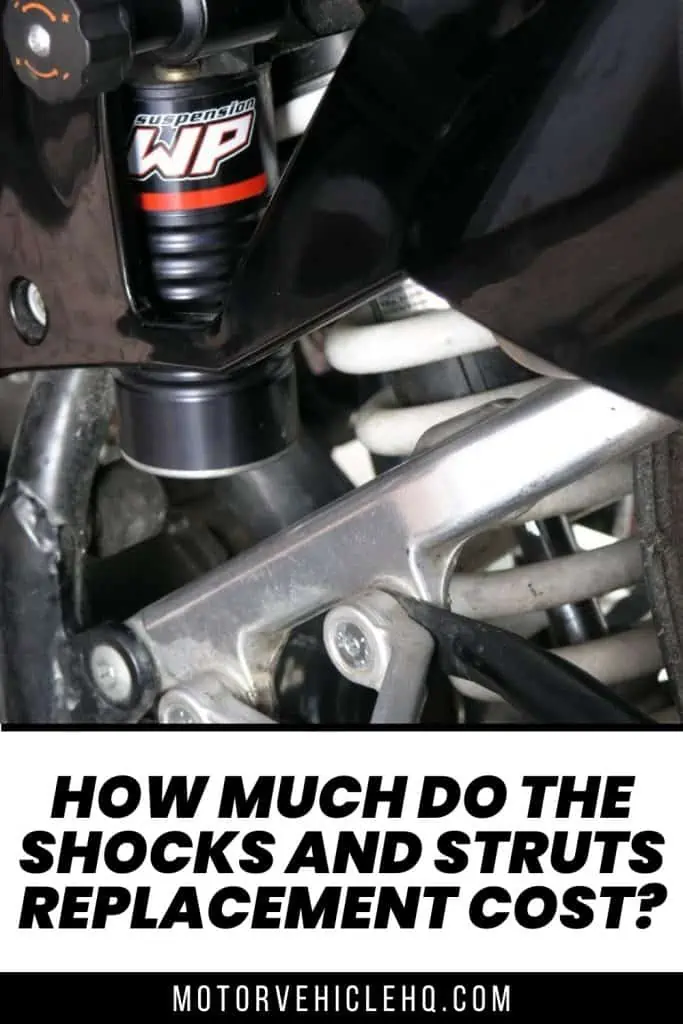
WP rear shock unit by Motophil / CC BY-SA 2.5

Jim Wicks is the founder of MotorVehicleHQ. With over two decades of experience in the automotive industry and a degree in Automotive Technology, Jim is a certified car expert who has worked in various roles ranging from a mechanic, car dealership manager, to a racing car driver. He has owned more than 20 cars over the past 15 years. Ask him about any vehicle you see on the road and he can tell you the make, model and year. He loves the aesthetics of all things cars, and keeps his vehicles in pristine condition.
In his free time, Jim enjoys getting his hands dirty under the hood of a classic car or taking long drives along the country roads. His favorite car? A 1967 Shelby GT500, a true classic that, according to Jim, “represents the pure essence of American muscle.”

